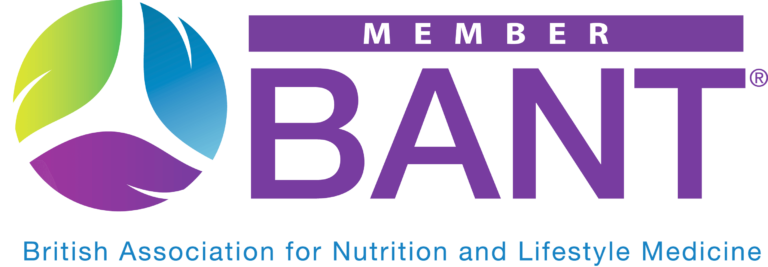
Irritable Bowel Syndrome (IBS) is, as sufferers – myself included – know only too well, a painful and sometimes quite debilitating, chronic functional gut disorder. What may surprise you, is the numbers of those affected: Some 15-20% of the population by some official estimates (including the NHS). After many years or a lifetime without answers, let alone solutions, an increasing number of those affected are turning to the new kid on the block, the Low FODMAP diet…and with surprising results.
Conceived by Australian researcher and dietician Dr Sue Shepherd in 1999 as a treatment for IBS, it is only in the last year or two that the diet has filtered its way into nutrition and health discourse over here – with mainstream medical doctors, even, giving it their stamp of approval. It would be difficult not to with the wealth of persuasive evidence that it works – and some 85% of patients reporting improved symptoms with it.
So what exactly are FODMAPS? The acronym stands for “fermentable oligosaccharides, disaccharides, monosaccharides and polyols”. Doesn’t exactly trip off the tongue, I know. But the concept is far less impenetrable than the name suggests. In fact these crazy-sounding entities are just sugars; naturally-occurring short-chain carbs and alcohols that, by some flaw in nature’s master plan, are not readily absorbed in the small intestine. Instead they pass to the large intestine, where our (normal, healthy – unless it’s out of whack – but that’s a story for another day) gut bacteria. feast on them. The end product of this process – known as fermentation if you’re interested – is gas. And for the IBS brigade, this can be produced in large amounts, leading to the wind, bloating and abdominal pain synonymous with the condition. If this weren’t enough, the FODMAPs can also affect colonic transit (or how quickly the bowels work) leading to diarrhoea, constipation – or both. Lovely!
There are 4 types of potentially problematic sugars:
OLIGOSACCHARIDES (fructans and galacto-oligosaccharides)
Found in e.g. onions, garlic, leeks, artichokes, bean, lentils, chickpeas, wheat & rye
DISACCHARIDES (lactose)
Found in dairy e.g. milk, ice cream, custard, soft cheeses
MONOSACCHARIDES (fructose)
Found in apples, pears, mangoes, honey, high fructose corn syrup (in processed foods)
POLYOLS (sorbitol, mannitol, xylitol etc.)
Found in apples, pears, stone fruits, mushrooms and anything containing these sugar alcohols e.g. chewing gum, mints, diet yoghurts
When you start out on the Low FODMAP diet, it can be a bit of a minefield. Overwhelming, complex and seemingly bizarre. But the more you understand, and (hopefully!) the better you feel, the easier it gets to navigate.
Here are my Top 10 Tips for following the Low FODMAP diet from someone who has been there, done that….and seen the results!
- Let an app do the hard work for you. It’s just too difficult and time-consuming, at least at first, to remember and get your head around what’s allowed and what’s not. You don’t need that extra headache. The official Monash University Low FODMAP Diet app is an excellent (and reliable) place to start. With a clear traffic light system, it lets you check if foods are in or out, the quantities to consume them in, helps you make shopping lists and plan recipes. If you’re serious about trying to eat Low FODMAP, I promise this will be £7.99 very well spent!
- Remember that it’s not forever. The “Elimination phase” where you avoid all high and medium FODMAP foods generally only last 6-8 weeks, followed by a phase of reintroductions. This can be fairly painstaking, but the good news is very few IBS-ers cannot tolerate any FODMAPS at all. The majority will find they have problems with one or two of the groups, or perhaps only certain foods within one or two groups. Reintroductions should generally be one food at a time, rather than a whole class of FODMAPS at once, and each newly introduced food should be eaten in sufficient quantity and the effects (if any) monitored over 1-2 weeks before reintroducing another. Remember to consult your registered nutritional therapist or dietician for guidance here. Once you have worked out where your issues lie, successful maintenance will generally involve avoiding only those “trigger” foods in the long-term.
- Low FODMAP does not necessarily mean gluten free, dairy free – or anything else “free” for that matter. As should now be apparent, the diet is highly personal and should be individualised to accommodate your particular triggers and intolerances. It is never a good idea to omit whole food groups long term, without justification, or true medical need. This is why it is important to progress to the reintroduction phase and avoids only your personal trigger foods long-term.
- There are still lots of things you can eat, and it is less demoralising if you focus on this list! Even in the strict initial phase, all fresh meat, fresh fish, eggs, most cheeses, most fresh vegetables, rice, potatoes, corn, oats and plenty of fruits ARE still on the menu.
- Cakes and bakes need not be off the menu! There are the “Free From” supermarket aisles to raid, of course, but far healthier – and much more fun – is to bake your own. Doves Farm flour blends, almond and coconut flours, ground almonds and other nuts and xanthan gum, are my go-to ingredients for delicious, FODMAP-friendly (and gluten free) bakes.
- If ever there was a reason to get into cooking, FODMAPping is it. Whilst Free From supermarket products can be a real lifeline for certain demographics, they are overpriced, often highly processed and not really made with FODMAPpers in mind. FODMAP is not, after all, a gluten free or dairy free diet per se. Nor are most of its followers nut allergy sufferers. Get creative in the kitchen and you will produce things far tastier that your gut should thank you for.
- You can still tuck into a curry.Whilst takeaway and restaurant curries invariably contain onion and garlic, 2 FODMAP no-nos, you can make your own healthier and infinitely more delicious, FODMAP friendly versions at home. I have found garlic oil an invaluable ingredient here – all the flavour, none of the issues(!) – and the vast majority of spices are A-OK on the diet…so no excuses.
- Everything in moderation.Imagine a bucket slowly filling up with rainwater. At some stage, the bucket will overflow. Sometimes the gut works a bit like this: It may be that you can tolerate X in small amounts, or if all other factors are (digestively-speaking) optimal e.g. you’re eating slowly, sitting down, relaxed, and chewing each mouthful 40 times – not to mention avoiding other potential triggers like stress. Whilst this can be frustrating because it’s uncertain, the flipside is you may be able to get away with small amounts of even your trigger FODMAPs occasionally. By the same token, if you’re someone who struggles with onions, garlic, or wheat, say, it may be that the amounts in regular sauces such as soy sauce, oyster sauce, mustard, or stock (powders) are too small to cause you problems.
- You probably won’t miss dairy, even if it does turn out to be a trigger for you.For one, most cheeses (especially hard and aged cheeses) are pretty low in lactose – great news if you’re a cheese fiend like me. Even yoghurt might be do-able in small doses, particularly the Greek stuff, which is naturally lower in lactose. If not, there are so many yummy dairy alternatives on the market. Almond Breeze (milk) is my favourite for cereal and coffee, whilst coconut milk (from a can) is divine in curries, rice pudding, and as a naughty-but-nice cream substitute.
- Embrace herbs, spices, and other FODMAP-friendly seasonings. You might miss the onions and garlic for a while, and eliminating processed and packaged food for the most part could quickly leave you feeling flavour-deprived… unless you experiment! Always check first, but the majority of spices are fine on the low FODMAP diet, as are pretty much all fresh herbs. Try orange or lemon zest, garlic or chilli infused oils, umami-rich Parmesan, anchovies, and flavour-packed condiments such as soy, mustard, and miso, all of which are allowed (but take note of the recommended quantities).
















